Piloting technology to measure, report and verify emissions reductions in rice cultivation
Thai Binh - The Vietnam Institute of Agriculture and Environment, in collaboration with South Korea's Thanks Carbon, has applied technology to measure emission reductions in a model of rice cultivation using alternating wetting and drying in Thai Binh.
2024-08-05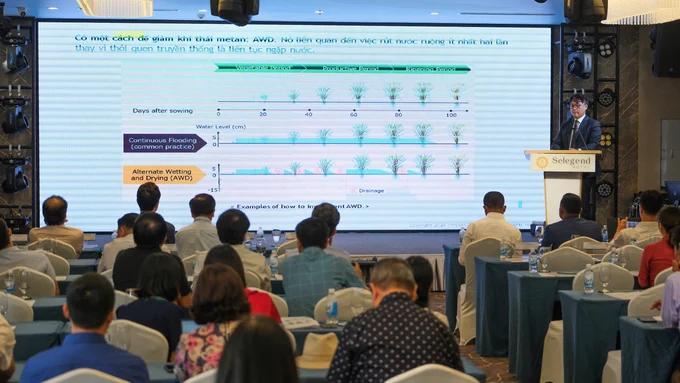
On July 3, 2024, in Thai Binh, Vietnam’s Institute of Agriculture and Environment and South Korea’s Thanks Carbon hosted an international workshop on “Reducing methane emissions in rice cultivation in the Red River Delta region using AI-based satellite technology and Gold Standard advisory”.
In recent years, the Vietnam Institute of Agriculture and Environment and Thanks Carbon have developed a model for rice cultivation that intersects wetting and drying (AWD), adjusted and validated a model for reading satellite images to determine water conditions in rice fields to calculate and validate GHG emissions. They have also conducted research on carbon certification for low-carbon rice cultivation, and supported individuals and organizations in low-carbon rice cultivation to trade carbon credits.
In line with the direction of promoting green growth and low carbon emissions in Vietnam’s agricultural environment, Thanks Carbon has researched and developed an intersectional wet and dry irrigation method and a measurement, reporting, and verification tool (AWD MRV). Thanks Carbon’s technology is based on satellite-based artificial intelligence and the Gold Standard system.
A repair worker in Thai Binh practices taking pictures, recording and uploading data to a system that monitors wet and dry irrigation practices.
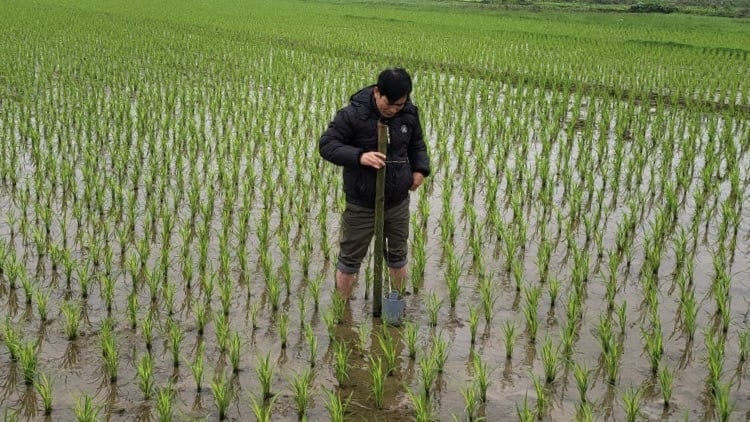
Digitized farming logbook for rice cultivation
Tyger Lee, technical director at Thanks Carbon, explained that while drip irrigation offers many benefits, there are challenges to implementing it and getting carbon credits: many farmers are unfamiliar with the technology and are hesitant to change their farming practices. In addition, carbon credit certification requires a complex verification process that can be confusing for farmers.
To address these issues, Thanks Carbon has developed two cutting-edge technologies: the first is a digital farming logbook application (Haimdall), which eliminates the need for farmers to manually record their farming logs, reducing the likelihood of problems and increasing the transparency of the data. The application also suggests to farmers the best time to cross watering and drying, making the process easier to follow.
It also uses satellite imagery and artificial intelligence to analyze light reflections to determine paddy water levels without having to manually measure them. This allows the company to reduce the labor required by collecting data on behalf of the farmers, consolidating multiple farms and managing them as a group. Repair officials manage farmers, monitor large areas, and group areas with similar watering and drying practices to minimize the amount of data they need to collect.
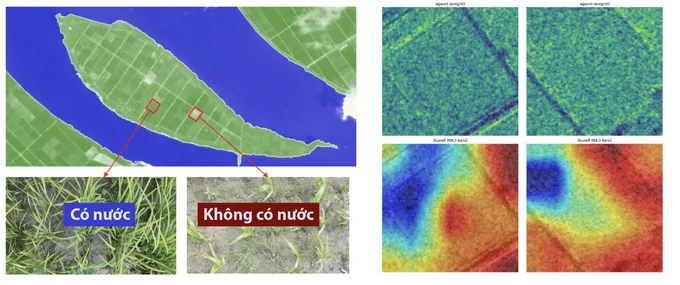
Specifically, Thanks Carbon partnered with the Institute of Agriculture and Environment to implement a pilot project in Phuong Social Agricultural Service Cooperative in Dong Hung County, Thai Binh, covering a total of more than 67 hectares of rice fields, involving nearly 800 farmers.
At the beginning of the project, the local irrigation system was surveyed and the farmland within the cooperative was divided into 61 points. Farmers were then trained in cross-wetting and cross-drying irrigation techniques, and seven repair personnel were trained in the use of the Heimdall application.
Over the course of the project, 50 satellite images and 3,500 field photos were collected. Through the Heimdall application, data such as water management records, fertilizer and pesticide use, and yields at each location were also collected, which was crucial for the Gold Standard’s carbon credit certification.
In the end, 26 high-resolution SAR satellite photographs were taken of 61 locations and 1,586 cases were reviewed. Excluding exceptions due to rain and local issues, the system’s accuracy rate reached 90%, and it was able to distinguish with up to 97% accuracy, which is higher than the 87.5% achieved in South Korea.
Mr. Tyger Lee emphasized that the advanced technology developed by Thanks Carbon effectively solved the difficulties encountered in the implementation of irrigation technology that intersects wetting and drying, and that when the paddy fields were submerged in water for five days, there was almost no weed growth, allowing farmers to implement the technology with confidence.
Spreading the “Farm, Road, Dry” procedure
The results of the spring 2024 rice harvest demonstrated the economic benefits the project brought to the community. According to Nguyen Trong Thanh, director of Phuong Social Agricultural Services Cooperative, rice grown using the intersecting watering and drying method was about 2% more productive than the control group. Rice grown this way is healthier, has larger and longer spikelets, and higher kernel fidelity. Specifically, the productivity of the rice was 73 ta (ta means 100 kg) per hectare, compared to 71.5 ta in the control group.
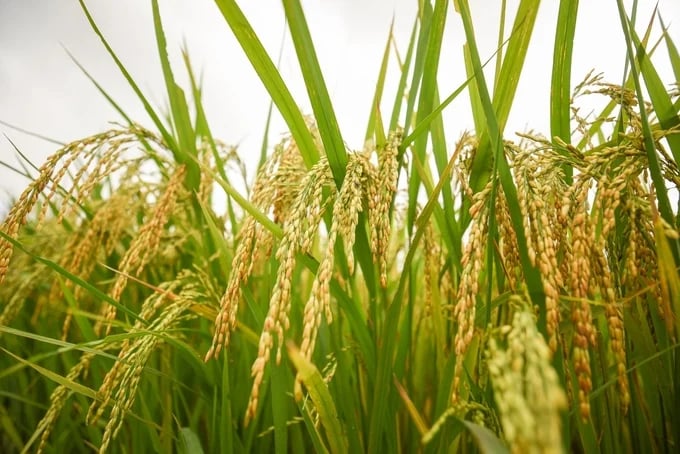
In addition, the intersecting watering and drying method reduced the number of watering applications by four, significantly reducing electricity costs and repair labor costs. As one watering application costs about VND3 million, the project saved a total of VND12 million on 67 hectares. The method reduced at least one pesticide application, improving the health of the soil and crops.
In addition to the economic benefits, farmers involved in the project have experienced a significant increase in awareness through training, and as a result, farmers are contributing to environmental protection by reducing plastic waste in their rice fields.
“The government’s policies aimed at reducing methane emissions and green growth are very relevant, providing new impetus for the sustainable and environmentally friendly development of Vietnam’s rice industry,” said Director Ông Thành. He also emphasized that the policy is a great opportunity to promote the restructuring of Vietnam’s rice industry in the process of integration with the world.
The role of farmers is crucial to the success of the project, which requires extensive outreach and education at all levels, from the central to the local level, to help farmers voluntarily change their perceptions and move towards sustainable production.
To spread production models that reduce carbon emissions, the director of the Phuong Social Agricultural Services Cooperative suggested that 5 to 10 hectares of pilot models should be introduced in each district, with performance evaluated every harvest season to maintain what works and identify areas for improvement. This would allow the models to be spread so that farmers can learn and apply them.
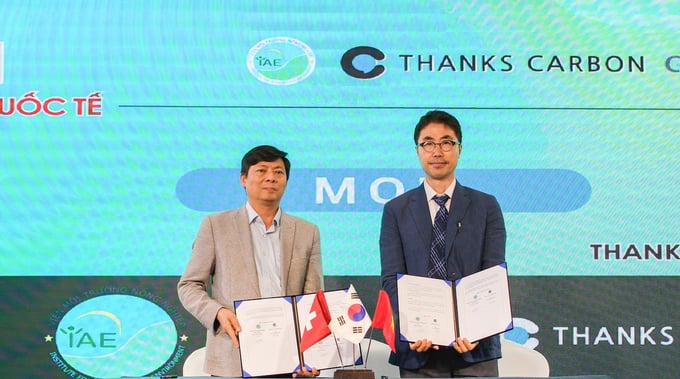
“Since 2000, Thai Binh has been mechanizing and transforming farming techniques, increasing the use of organic fertilizers and switching to short-season rice varieties,” said Nguyễn Thị Nga, Deputy Director of the Department of Agriculture and Rural Development of Thai Binh. Taibin hopes that the results of these projects will be shared quickly to spread sustainable rice farming models and contribute to green agriculture and greenhouse gas emissions reduction.
“Taibin is proud to be the first region where 100% of the cooperatives have been coached to apply integrated pest management (IPM) since the early 2000s. The province has long been consistent with ‘farm-road-dry’, a water management strategy that matches rice growth stages,” said Deputy Director Nguyen Thi Nghia.